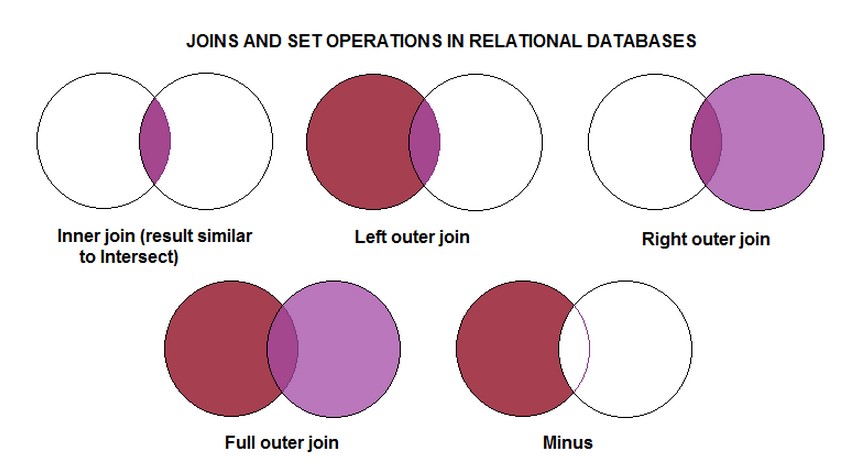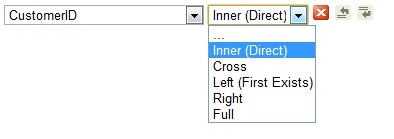Before you begin - a word about JOINS: To connect the data in your ClientSpace installation for use in a report, the tables must be joined together. The following image describes common joins used in SQL server to connect tables.

For the purposes of BI reporting in ClientSpace, we will only deal with a few of these.

Inner (Direct) Join: Selects rows from two tables such that the value in one column of the first table also appears in a column of the second table. This is one of the most common joins used in reporting.
Cross Join: A cross join returns a result table where each row from the first table is combined with each row from the second table.
Left (First Exists) Join: The Left Outer Join known also as Left Join returns all rows from the left table in the Left Outer Join clause, no matter if the joined columns match. A field in a result row is null if the corresponding input table did not contain a matching row. This is the second most common join used - Inner and left joins make up most of the joins necessary to connect ClientSpace data.
Right Join: The Right Outer Join known also as Right Join returns all rows from the right table in the Right Outer Join clause, no matter if the joined columns match. A field in a result row is null if the corresponding input table did not contain a matching row.
Full Join: The Full Outer Join known also as Full Join returns all rows from Both the Right Outer Join and Left Outer Join. A field in a result row is null if the corresponding input table did not contain a matching row.